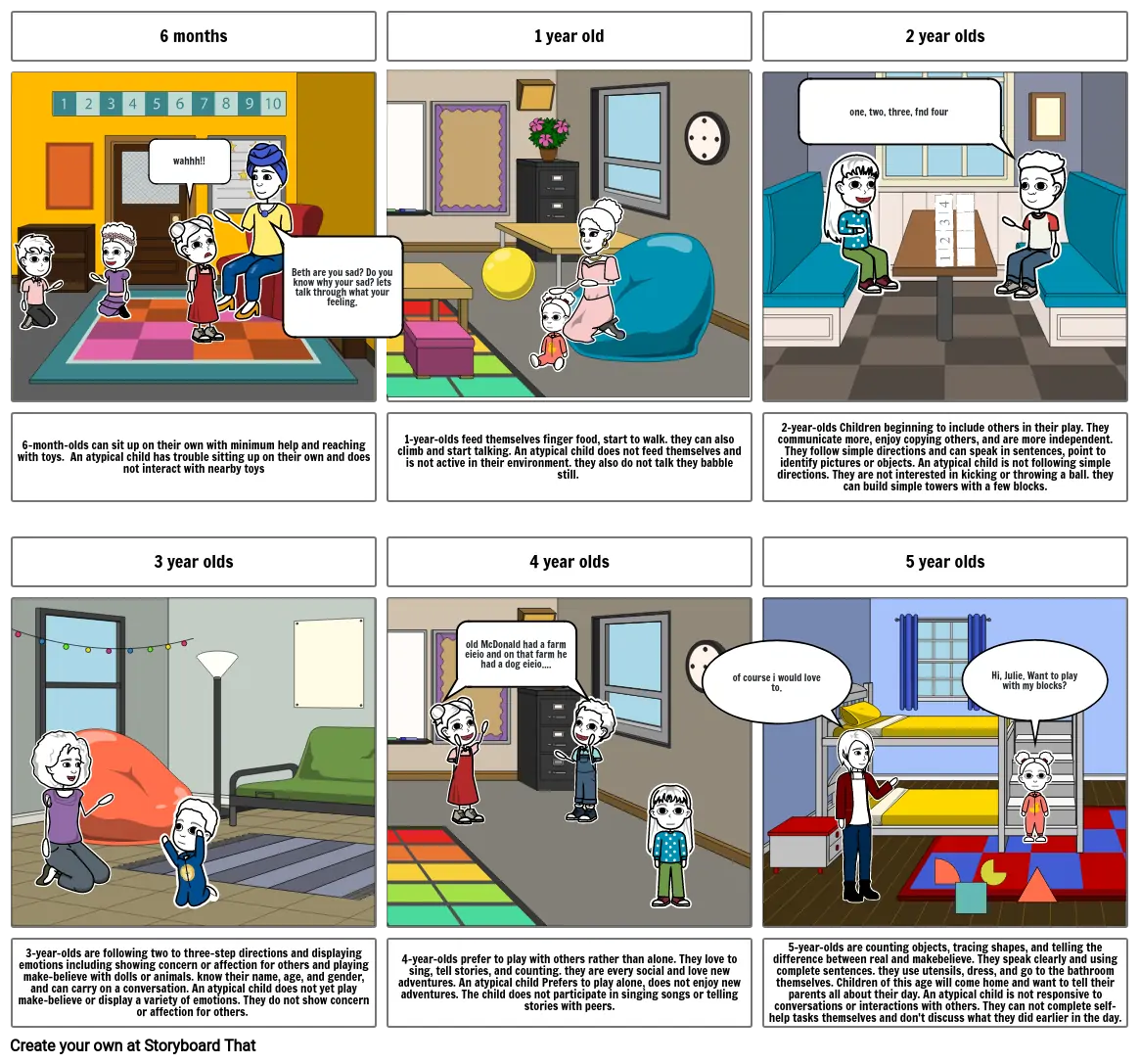Unknown Story

Storyboard Text
- 6 months
- wahhh!!
- Beth are you sad? Do you know why your sad? lets talk through what your feeling.
- 1 year old
- 2 year olds
- one, two, three, fnd four
- 6-month-olds can sit up on their own with minimum help and reaching with toys. An atypical child has trouble sitting up on their own and does not interact with nearby toys
- 3 year olds
- 1-year-olds feed themselves finger food, start to walk. they can also climb and start talking. An atypical child does not feed themselves and is not active in their environment. they also do not talk they babble still.
- 4 year olds
- old McDonald had a farm eieio and on that farm he had a dog eieio....
- of course i would love to.
- 2-year-olds Children beginning to include others in their play. They communicate more, enjoy copying others, and are more independent. They follow simple directions and can speak in sentences, point to identify pictures or objects. An atypical child is not following simple directions. They are not interested in kicking or throwing a ball. they can build simple towers with a few blocks.
- 5 year olds
- Hi, Julie. Want to play with my blocks?
- 3-year-olds are following two to three-step directions and displaying emotions including showing concern or affection for others and playing make-believe with dolls or animals. know their name, age, and gender, and can carry on a conversation. An atypical child does not yet play make-believe or display a variety of emotions. They do not show concern or affection for others.
- 4-year-olds prefer to play with others rather than alone. They love to sing, tell stories, and counting. they are every social and love new adventures. An atypical child Prefers to play alone, does not enjoy new adventures. The child does not participate in singing songs or telling stories with peers.
- 5-year-olds are counting objects, tracing shapes, and telling the difference between real and makebelieve. They speak clearly and using complete sentences. they use utensils, dress, and go to the bathroom themselves. Children of this age will come home and want to tell their parents all about their day. An atypical child is not responsive to conversations or interactions with others. They can not complete self-help tasks themselves and don't discuss what they did earlier in the day.
Over 30 Million Storyboards Created

